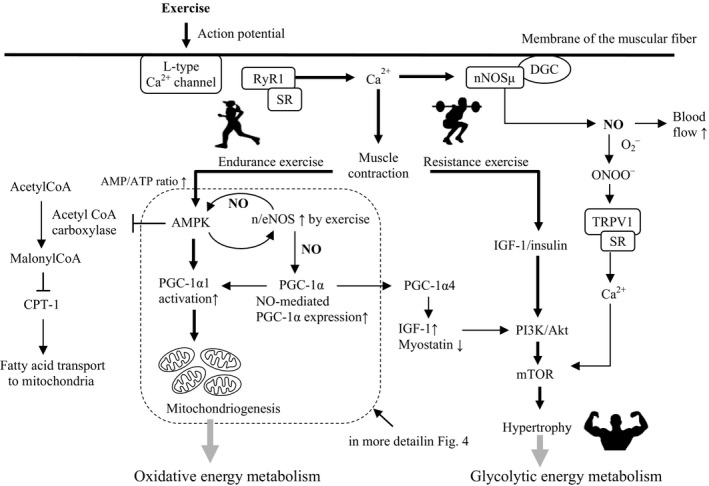Figure 3.

Exercise leads to mitochondrial biogenesis and muscle hypertrophy. Schematic diagram showing the two types of exercise and their downstream signaling pathways leading to mitochondriogenesis and muscle hypertrophy. AMP/ATP, adenosine monophosphate/adenosine triphosphate; AMPK, AMP‐activated protein kinase; CPT‐1, carnitine palmitoyltransferase 1; CREB1, cAMP response element‐binding protein 1; DGC, dystrophin glycoprotein complex; eNOS, endothelial nitric oxide synthase; IGF‐I, insulin‐like growth factor‐I; mTOR, mammalian target of rapamycin; n/eNOS, neuronal and endothelial nitric oxide synthase; nNOSμ, neuronal nitric oxide synthase μ; NO, nitric oxide; ONOO‐, peroxynitrite anion; PGC‐1α, peroxisome proliferator‐activated receptor gamma coactivator‐1α; PI3K, phosphoinositide 3‐kinase; PKA, protein kinase A; RyR1, type 1 ryanodine receptor; SR, sarcoplasmic reticulum; TRPV1, transient receptor potential vanilloid subfamily, member 1
